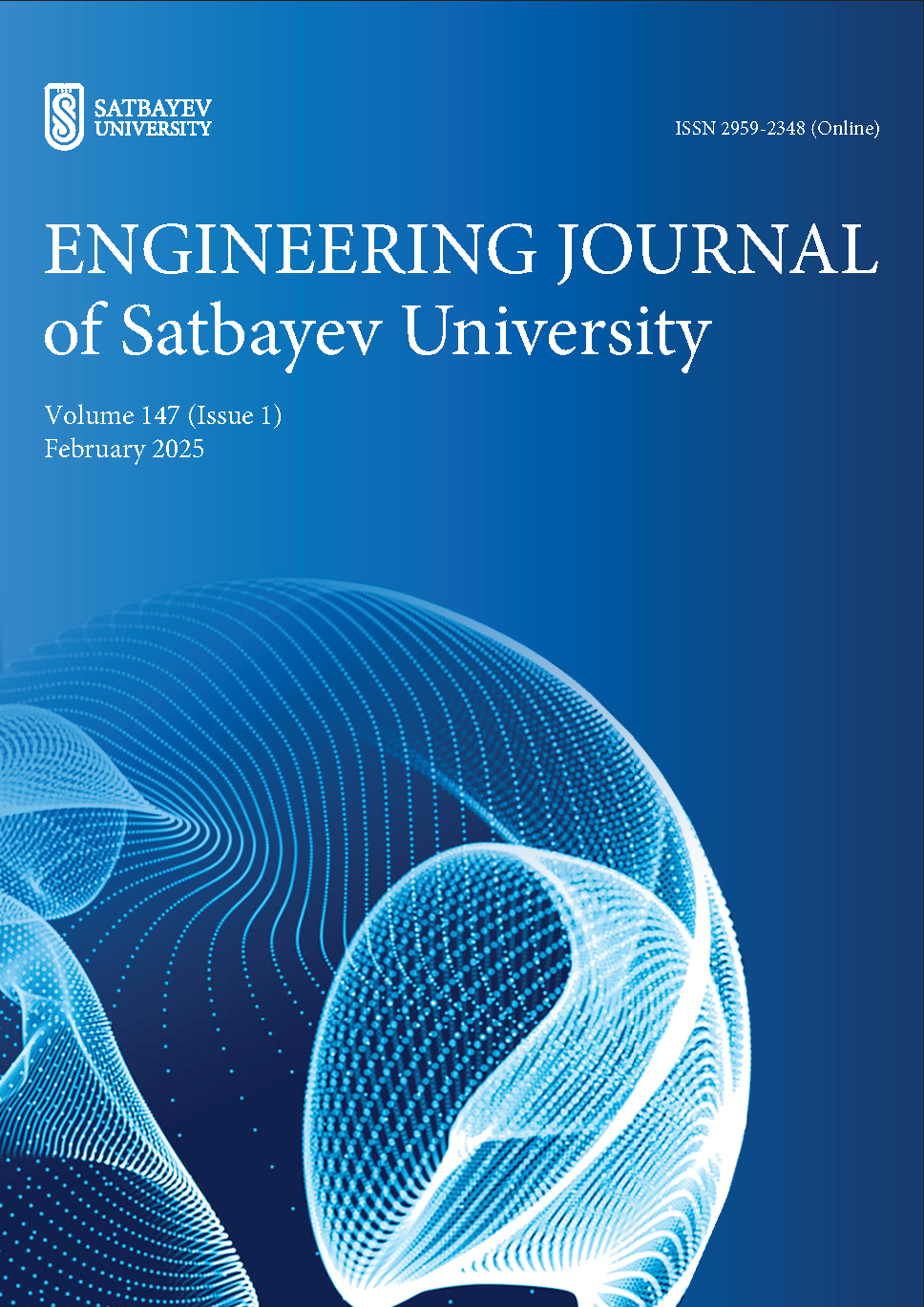Economic analysis of the processing of various titanium-containing raw materials to obtain titanium, vanadium, and niobium
DOI:
https://doi.org/10.51301/ejsu.2025.i1.01Keywords:
slag, rutile, costs, processing, chlorination, wasteAbstract
This work presents an economic analysis of processing various titanium-containing raw materials-titanium slag and synthetic rutile-through chlorination in a molten salt medium in the presence of carbon. The processing of titanium-containing raw materials is carried out using a chlorination technology in molten alkali metal salts (MgCl₂, NaCl, KCl) with high-concentration gaseous chlorine in the presence of a carbon-containing reducing agent. Anthracite is used as the reducing agent, while waste sludge from magnesium electrolysis is used as the molten medium. The processing takes place in cylindrical chlorination furnaces lined with fireclay bricks at temperatures of 720-800°C. The chlorination products are directed to a condensation system. The work provides a description of the Satpayev ilmenite deposit in East Kazakhstan and presents the chemical composition of Satpayev ilmenite concentrate, titanium slag, and synthetic rutile obtained through various processes. A correlation is established between the vanadium, niobium, and tantalum content in ilmenite concentrates and their prevalence in the Earth's crust. Based on this correlation, the order of transition metals in Group V of the periodic table is determined according to their decreasing concentration in the concentrates. Technological challenges associated with processing titanium-containing raw materials with elevated levels of certain components are described, along with some methods for producing synthetic rutile. A cost comparison is provided for the production of titanium slag and synthetic rutile. Material balance calculations for the chlorination process of titanium slag and synthetic rutile from different production methods are performed to assess raw material costs and waste disposal expenses. The study concludes that producing synthetic rutile from Satpayev ilmenite concentrate is economically feasible.
References
Zwierynski, A.J., Zlotkowski, A., Solecki, M. L., Balicki, R., Binkowska, W., Janiak, A., Edelmüller, H., Gardynik, A. & Leśniowska M. (2022). Ilmenite, the raw material of the future. Mathematical methods and terminology in geology, 69-74
Mehdilo, A., Irannajad, M. & Rezai B. (2015). Chemical and mineralogical composition of ilmenite: Effects on physical and surface properties. Minerals Engineering, (70), 64-76. https://doi.org/10.1016/j.mineng.2014.09.002
Schmidt, R. (2019). Magnetic properties of ilmenite Mn₂FeSbO₆. Journal of Magnetism and Magnetic Materials, (480), 58-63. https://doi.org/10.1016/j.jmmm.2019.02.047
Wei, Lu, Xuewei, Lu, Junyi, Xiang, Kai, Hu, Shiqing, Zhao, Jie, Dang, Kexi, Han & Bing, Song. (2019). Effect of preoxidation on the reduction of ilmenite concentrate powder by hydrogen. International Journal of Hydrogen Energy, 44(2) 4031-4040, https://doi.org/10.1016/j.ijhydene.2018.12.139
Subasinghe, H.C.S., Ratnayake, A.S. (2021). Processing of ilmenite into synthetic rutile using ball milling induced sulphuri-sation and carbothermic reduction. Minerals Engineering, (173), 107197. https://doi.org/10.1016/j.mineng.2021.107197
Kurmangaliyev, A.A. (2005). Current state and development trends of the raw material base of the titanium-magnesium indus-try in the Republic of Kazakhstan. Geology, Mining, Metallurgy. Bulletin of VKGTU, (4), 13-20.
Dyachkov, B.A., Mochalkina, L.N., Kuzmina, O.N., Bochkova, O.I. & Kravchenko M.M. (2005). Types of weathering crust de-posits in Eastern Kazakhstan. Geology, Mining, Metallurgy. Bul-letin of VKGTU, (4), 6-12.
Kravchenko, M.M., Dyachkov, A.A., Suiekpaev, E.S., Sapar-galiyev, E.M., Azelkhanov, A.Zh., Oitseva, T.A. (2016). Pro-spects for strengthening and developing the raw material base of titanium production in Eastern Kazakhstan. Geology. Bulletin of Perm University, (1), 82-90.
Zabolotskaya, Y.V. (2014). Autoclave de-siliconization of leu-coxene concentrate with calcium hydroxide to obtain synthetic rutile (doctoral dissertation). Moscow
Harald Elsner. (2010). Heavy Minerals of Economic Im-portance. BGR, Hannover, Germany
Zhang, W., Zhu, Zh. & Cheng, Ch.Y. (2011). A literature re-view of titanium metallurgical processes. Hydrometallurgy, (108), 177-188. https://doi.org/10.1016/j.hydromet.2011.04.005
Nadolsky, A.P. (1980). Calculation of processes and apparatus for refractory metal production. Moscow: Metallurgy.
Downloads
Published
How to Cite
Issue
Section
License
Copyright (c) 2025 Engineering Journal of Satbayev University

This work is licensed under a Creative Commons Attribution-NonCommercial-NoDerivatives 4.0 International License.
<div class="pkpfooter-son">
<a rel="license" href="http://creativecommons.org/licenses/by-nc/4.0/"><img alt="Creative Commons License" style="border-width:0" src="https://i.creativecommons.org/l/by-nc/4.0/80x15.png"></a><br>This work is licensed under a <a rel="license" href="http://creativecommons.org/licenses/by-nc/4.0/">Creative Commons Attribution-NonCommercial 4.0 International License</a>.
</div>





